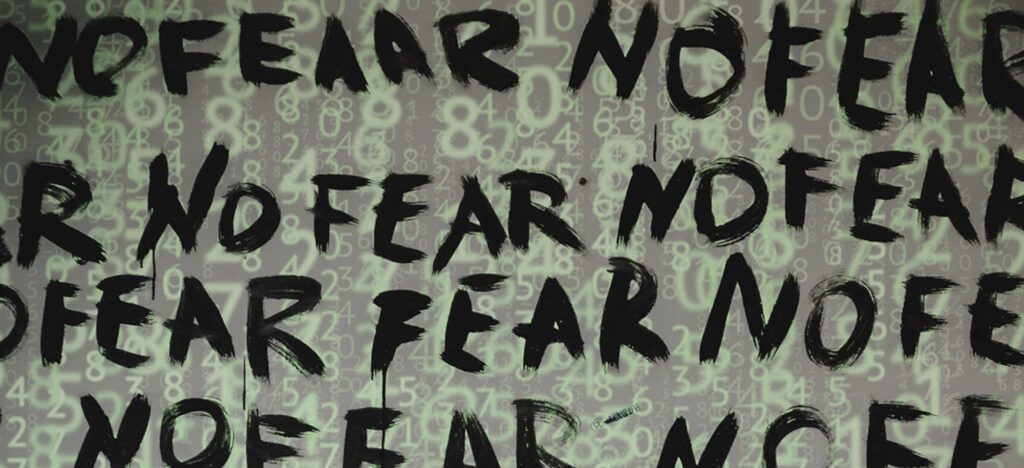As fundraisers, you and I understand the importance of generating revenue to support our missions. We worry about people who may be turned away if we don’t raise enough money. This culture of scarcity permeates many nonprofits – an approach based on FEAR – False Evidence Appearing Real.
Individuals and corporations donate hundreds of billions of dollars to charities each year so why do we worry about scarcity?
Perhaps because we are scared to solicit people we perceive as more powerful and affluent than we are. Or maybe, we don’t understand donors’ needs and spend too much time talking about our own.
- What if we looked at fundraising as a process to help people achieve their philanthropic goals, not simply a way to meet our fundraising quotas?
- What if we allowed donors’ interests to influence the way we work while preserving the identity and culture of our programs?
- What if we dared to challenge donors’ assumptions about needs and the root causes of those needs, by encouraging them to experience the impact of their generosity firsthand?
Years ago, I began meeting with a donor who made a one-time gift of $100. Without prospect research tools or easy Internet searches, I didn’t know his interests or capacity. As a “major” donor to this fledgling organization I invited him to meet for coffee. We talked about his family, how his gift had been used, and his favorite charities. He gave me a check for $500. We’d meet for coffee every quarter and each time he’d make a gift more sizeable than the last.
At our final meeting for the year he handed me a check.
“I can’t accept this now,” I said. “I want YOU – ALL of you, not just your money!
Come to Jamaica to see what your gift is doing before you give me another dime.”
He looked at me in shock. “Nobody has ever refused my money… When can we go?”
On the plane I listened to all the things he expected to see, his plans to solve the problem of poverty through his gifts, his plans to teach our people how to be self-sufficient. I smiled outwardly but cringed inwardly at his lack of awareness of white privilege and his “white savior complex”. He had good intentions. He just didn’t know what he didn’t know. He had no clue that our people had the skills and knowledge needed to solve their problems. We simply lacked money to execute due to systems and institutions designed to keep people in poverty.
For three days we traveled the community, visiting barefoot children in tin shacks, meeting people who hadn’t eaten a proper meal in days, touring the primary school – a 50 year old building in shambles with plumbing that barely functioned, high rates of absenteeism and disciplinary problems, and pitiful academic performance. He had never spent time with people suffering the indignity of poverty. He was stunned by their wisdom, hospitality and optimism though the challenges of daily life would be insufferable to most. When it was time to leave, he didn’t want to go. He had made new friends and for the first time, he began to understand the root causes of poverty and what it takes to fight against it.
“It was so much easier to write a check,” he said. “This experience makes me question the way I live. I came here to help people. Instead they helped me.”
On the way home we talked about the renovation and rehabilitation plans we had for the school, the need to feed hungry children so they can learn, and the needs of senior citizens whose meager pensions had been eroded by the rapid devaluation of the Jamaican dollar.
And I listened.
He talked about wanting to invest in projects that had the potential to create long term impact and are difficult to fund. Since he provided professional services involved in construction, I made an educated guess that building and infrastructure projects may be right up his alley.
Twelve years later, this donor has funded the renovation and construction of septic systems, bathrooms, classrooms, a commercial kitchen, sports fields, security fencing, solar electric panels, and more. And he’s made major gifts to fund the purchase of land for future expansion. He loves knowing that he can make a contribution that will not only make a difference in the lives of children today, but for generations to come – all without creating future on-going expenses.
He delights in the accomplishments of our children. He’s taken his friends to Jamaica and felt disappointed when some of them didn’t become donors. We’ve shown him that immersion experiences affect people differently. The friends that did not become our supporters are more involved in their favorite charities.
Whether the fruits of our labor inspire people to work in our vineyard or somewhere else, the world benefits from increased philanthropy. Perhaps another, even smaller organization, will receive the funding it needs to grow.
This is what happens when we adopt a culture of abundance.
- We become willing to be vulnerable – open to the ideas and interests of donors.
- We see ourselves as facilitators of giving and enjoy helping individuals achieve their philanthropic dreams.
- We raise more money than we ever thought possible because we make donors feel like valued partners and insiders rather than ATM machines.
- We attract more donors and supporters because our philosophy of abundant living distinguishes us from other nonprofits plagued by a culture of scarcity.
- We meet people unaware of their privilege and teach them to become allies and bridge builders, through conversions of the heart.
Throughout my career, I’ve seen this story replayed many times. Different donors, different interests, different organizations.
One thing is clear, when you operate from a philosophy of abundance, your fundraising revenues surge.
Would you like to learn how you can meet donors where they are at and inspire them to partner with you to make an impact in your community? Click here to connect with Rachel.


